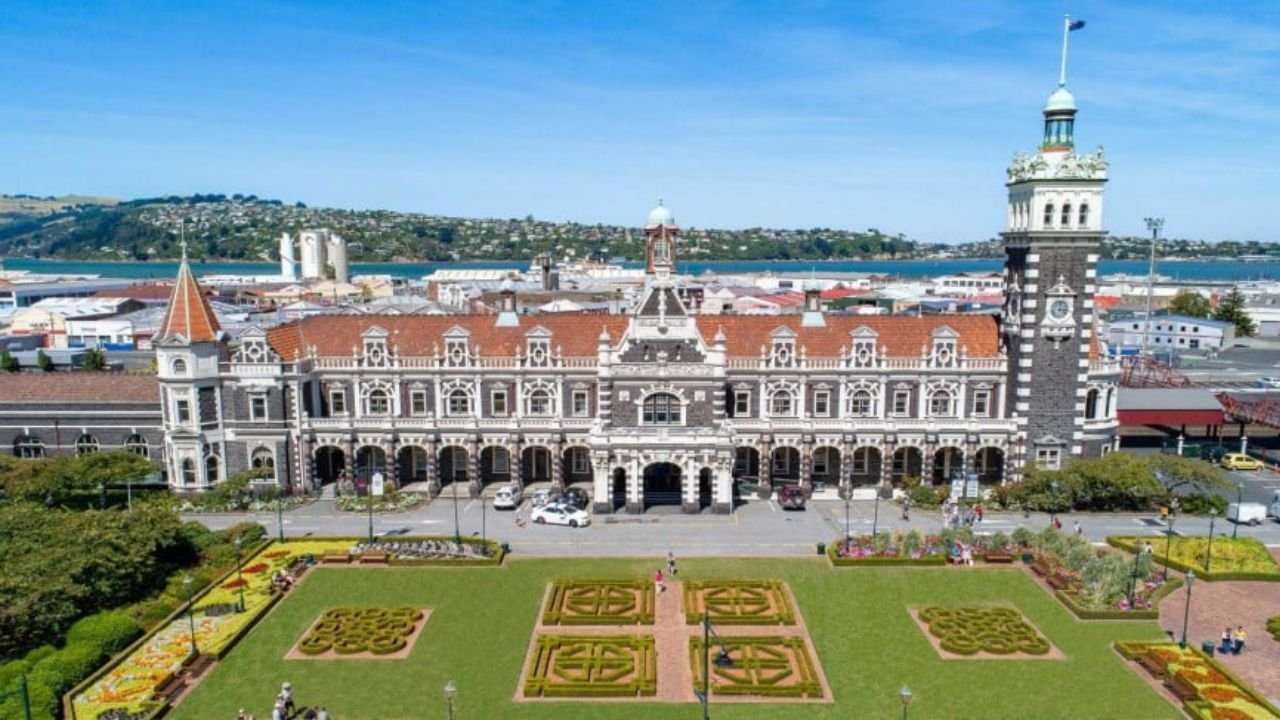New Zealand’s South Island, or Te Waipounamu, is a land of dramatic landscapes, from the rugged Southern Alps to the serene fjords of Fiordland. Beyond its natural beauty, the island is a tapestry of history and culture, woven from Māori traditions, European colonial influences, and the contributions of later immigrants. exploration delves into the historical and cultural highlights of the South Island, offering insights into its indigenous heritage, colonial past, and vibrant contemporary scene.
Māori Heritage: The First Inhabitants
The Māori, New Zealand’s indigenous Polynesian people, arrived on the South Island around the 13th century, navigating the Pacific in waka (canoes). Their culture, deeply connected to the land, shaped the island’s early history. The South Island’s Māori belong primarily to the Ngāi Tahu iwi (tribe), whose stories, art, and traditions remain integral to the region’s identity.
Ngāi Tahu and the Land
Ngāi Tahu’s relationship with the South Island is rooted in whakapapa (genealogy) and kaitiakitanga (guardianship of the environment). Key sites like Aoraki/Mount Cook, the tallest peak, hold spiritual significance. According to Ngāi Tahu legend, Aoraki was a son of the Sky God, turned to stone along with his brothers when their canoe struck a reef. Visiting Aoraki/Mount Cook National Park offers a chance to engage with this mythology, with guided tours often including Māori storytelling.
The Waitaki River, another cultural touchstone, was a vital food source, particularly for harvesting eel (tuna). The Ngāi Tahu’s sustainable practices ensured resources thrived for generations. Today, cultural tours in Canterbury, such as those offered by Ngāi Tahu Tourism, provide hands-on experiences like learning about traditional food-gathering techniques or visiting marae (Māori meeting grounds).
Māori Rock Art
The South Island is home to rare Māori rock art, concentrated in the limestone shelters of North Otago and South Canterbury. These drawings, created with charcoal and red ochre, depict human figures, animals, and waka, offering glimpses into pre-European life. The Takiroa Rock Art Shelter near Duntroon is a must-visit, with guided tours explaining the art’s significance. These sites are sacred, and visitors are encouraged to respect restrictions on photography and touching.
European Settlement: A Colonial Legacy
European exploration of the South Island began in the 17th century, with Dutch explorer Abel Tasman sighting the island in 1642. However, sustained contact came in the late 18th century with British and French explorers, followed by sealers, whalers, and missionaries. The 19th century saw organized European settlement, profoundly shaping the island’s cultural landscape.
The Treaty of Waitangi and Its Impact
The 1840 Treaty of Waitangi, signed between Māori chiefs and the British Crown, promised Māori rights to their lands and resources. However, misunderstandings and breaches led to land disputes, particularly affecting Ngāi Tahu. Large-scale land purchases in the 1840s and 1850s, often under dubious circumstances, reduced Ngāi Tahu’s holdings significantly. The Ngāi Tahu Claim, settled in 1998, acknowledged these injustices, providing financial redress and affirming cultural rights. Visitors can learn about this history at the Canterbury Museum in Christchurch, which houses exhibits on the treaty and its aftermath.
Colonial Cities: Christchurch and Dunedin
Christchurch, known as the “Garden City,” was founded in 1850 as a planned Anglican settlement. Its neo-Gothic architecture, like the ChristChurch Cathedral (currently under restoration post-2011 earthquake), reflects English influences. The city’s Arts Centre, a former university campus, hosts markets, galleries, and performances, blending colonial heritage with modern creativity. The Christchurch Art Gallery Te Puna o Waiwhetū also showcases Māori and European art, bridging cultural narratives.
Dunedin, established by Scottish Presbyterians in 1848, exudes a distinct Celtic flavor. Its name, derived from the Gaelic for Edinburgh, reflects its heritage. The city’s Victorian and Edwardian architecture, including the Dunedin Railway Station and Larnach Castle, is a testament to its prosperous gold rush era. The Toitū Otago Settlers Museum offers a deep dive into the lives of early settlers, with exhibits on Scottish migration and the Chinese gold-mining community.
The Gold Rush: A Multicultural Boom
The 1860s gold rush in Otago and the West Coast brought waves of immigrants, including Chinese miners, whose legacy endures. Arrowtown, a preserved gold-mining town, offers a glimpse into this era with its stone cottages and the Chinese Settlement, a restored village highlighting the contributions and hardships of Chinese miners. The annual Arrowtown Autumn Festival celebrates this history with parades and cultural performances.
Cultural Fusion: Modern South Island Identity
Today, the South Island’s culture is a dynamic blend of Māori, European, and other influences, enriched by Pacific Island, Asian, and global communities. Festivals, museums, and local traditions reflect this diversity.
Festivals and Events
The South Island hosts vibrant festivals that celebrate its cultural mosaic. The Christchurch Arts Festival, held biennially, features theatre, dance, and music, often incorporating Māori and Pacific Island performances. Dunedin’s Midwinter Carnival transforms the city with lanterns, processions, and community events, echoing its Scottish roots. In Nelson, the Whakatū Marae hosts Waitangi Day celebrations, with haka, waiata (songs), and kai (food), welcoming all to engage with Māori culture.
Museums and Galleries
Museums across the island preserve and interpret its history. The Nelson Provincial Museum explores the region’s Māori and colonial stories, with artifacts like taonga (Māori treasures) and early settler tools. In Invercargill, the Southland Museum and Art Gallery houses the Tuatara House, showcasing the island’s unique biodiversity alongside cultural exhibits. The Hokitika Museum on the West Coast delves into the gold rush and greenstone (pounamu) trade, a stone sacred to Māori.
Pounamu: The Greenstone Legacy
Pounamu, or greenstone, is a cornerstone of Māori culture, used for tools, ornaments, and ceremonial items. Found primarily on the West Coast, it is managed by Ngāi Tahu to ensure sustainable harvesting. Visitors can explore this tradition at Hokitika’s greenstone workshops, where artisans demonstrate carving techniques. Purchasing authentic pounamu supports Māori craftspeople and respects cultural protocols.
Regional Highlights: A Cultural Journey
The South Island’s regions each offer unique historical and cultural experiences, making it ideal for a road-trip exploration.
Nelson and Marlborough: Art and Wine
Nelson is a hub for artists, with over 300 working creatives. The Suter Art Gallery showcases local works, while the Nelson Arts Festival highlights theatre and music. The region’s Māori heritage is accessible at sites like the Whakatū Marae. Marlborough, famous for its Sauvignon Blanc, blends wine culture with history at sites like the Omaka Aviation Heritage Centre, which displays World War I aircraft.
West Coast: Rugged Heritage
The West Coast’s wild beauty is matched by its cultural richness. Hokitika, the “Cool Little Town,” hosts the Wildfoods Festival, where adventurous eaters try local delicacies like huhu grubs. The region’s gold-mining history is vivid at Shantytown Heritage Park, a reconstructed 19th-century village. Māori-guided pounamu tours offer a deeper understanding of the stone’s significance.
Canterbury: Rebuilding and Resilience
Christchurch’s post-earthquake rebuilding has fostered a creative renaissance. Street art adorns the city, with murals reflecting Māori and multicultural themes. The Transitional Cathedral, made of cardboard, symbolizes resilience. Rural Canterbury offers historical gems like Akaroa, a former French settlement with quaint cottages and bilingual street signs.
Otago: Gold and Grandeur
Dunedin’s architectural splendor pairs with cultural vibrancy at the Tūhura Science Centre and the Dunedin Public Art Gallery. Central Otago’s goldfields, including Cromwell and Alexandra, offer heritage trails. The region’s wineries, like those in Bannockburn, host cultural events blending wine and Māori storytelling.
Fiordland and Southland: Untamed Beauty
Fiordland’s Milford Sound, a UNESCO World Heritage Site, is steeped in Māori legend as a creation of the demigod Tū-te-raki-whānoa. Cultural cruises share these stories. In Southland, Stewart Island (Rakiura) offers Māori-guided tours exploring its history as a whaling and fishing hub. The island’s Māori name, meaning “glowing skies,” reflects its aurora sightings.
Practical Tips for Cultural Exploration
To engage respectfully with South Island culture:
- Learn Basic Māori Etiquette: Greet with “kia ora” (hello), respect marae protocols, and ask permission before photographing cultural sites.
- Support Local: Buy from Māori artisans, especially for pounamu or woven goods, and dine at eateries offering traditional kai.
- Join Guided Tours: Māori-led tours, like those by Ngāi Tahu Tourism, provide authentic insights.
- Plan for Festivals: Check event calendars for Waitangi Day (February 6), Matariki (Māori New Year, mid-year), or regional festivals.
- Visit Museums Early: Start days at museums for context before exploring sites.
Conclusion
The South Island of New Zealand is a cultural and historical treasure trove, where Māori traditions, colonial legacies, and modern diversity converge. From the sacred peaks of Aoraki to the goldfields of Otago, each region offers stories that deepen one’s appreciation of this remarkable land. By engaging with its people, places, and practices, visitors can experience a South Island that is as culturally rich as it is visually stunning.

